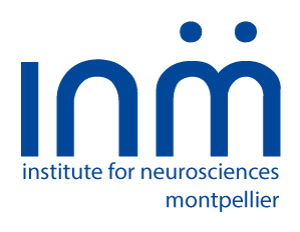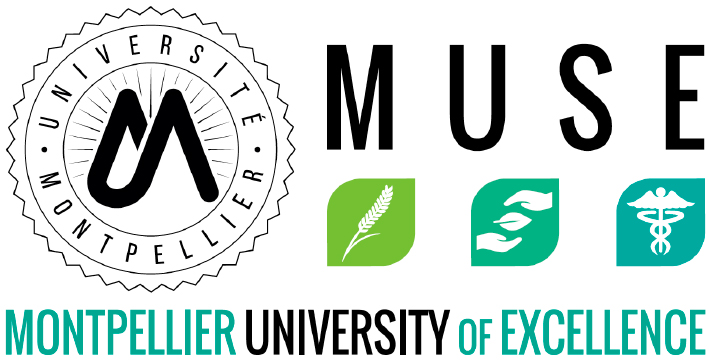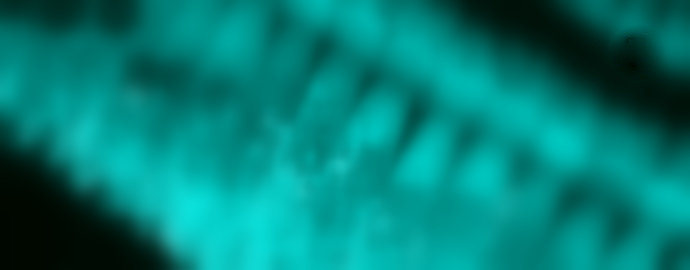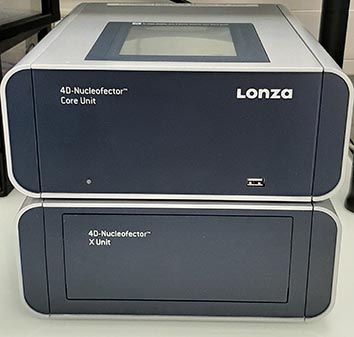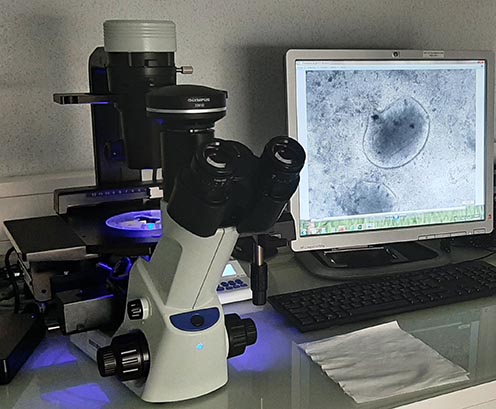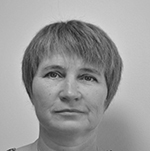iPSc differentiation - Organoids
The combination of technological advances such as induced pluripotent stem cell (iPSC) culture and cell differentiation offers access to biological structures called Organoids. The use of these multidimensional cell models is a major support for current medical research. They are excellent miniaturized and simplified organ models that allow a better understanding of developmental processes, physiology or human pathologies. They have become an indispensable tool in the development of personalized medicine, drug screening and cell therapy.
The "iPSC Differentiation - Organoids" platform can accommodate all personnel from within and outside of the INM who wish to carry out scientific projects in the field of induced pluripotent stem cells (iPSC) and their differentiation into organoids.
In particular, we have expertise in differentiating human iPSCs into Retinal Pigment Epithelium (RPE) and retinal organoids that contain photoreceptors as well as other retinal cell types.
Since 2020, the platform is part of the Network of Organoid Platforms of Montpellier (POM), which aims to bring together all the experts in this field in Montpellier and its surrounds.
The person in charge of the "iPSC Differentiation - Organoids" platform ensures:
- the organization and management of the platform;
- the adaptation and development of methodologies;
- the advice, orientation and training of future users;
- the coordination and the accompaniment of the users;
- the maintenance and repair of equipment.
Equipment and resources:
- Microbiological Safety Cabinets (HERASafe, FASTER)

- CO2 incubators (Panasonic, Thermo Fischer Scientific)
- IncuCyte (Sartorius)
- NucleoFector 4D (Lonza)
- Imaging systems (Olympus, Lynx EVO)
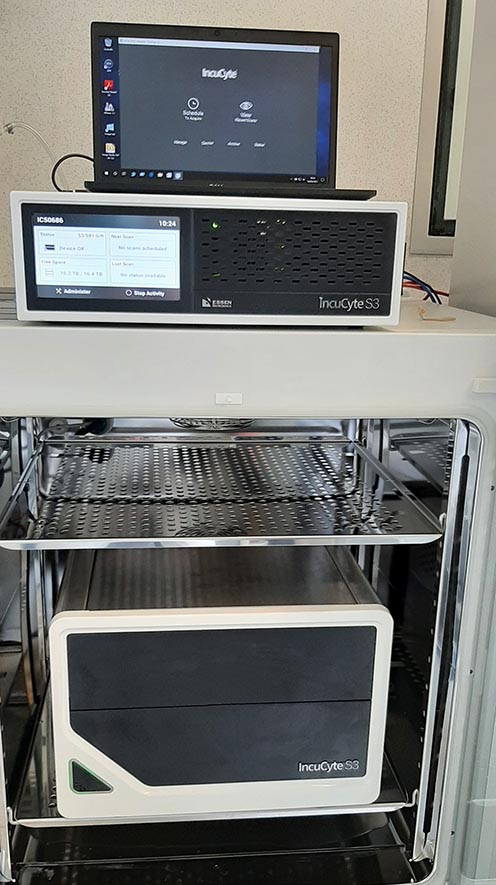
Nucleofector Olympus
IncuCyte
Available protocols:
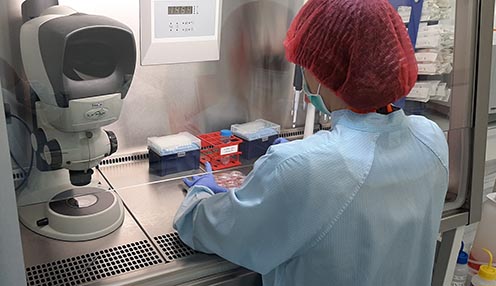 - Reprogramming of somatic cells into iPSCs;
- Reprogramming of somatic cells into iPSCs;
- Amplification, freezing and thawing of iPSCs;
- CRISPR/Cas-mediated genome editing of iPSCs;
- FACS-sorting of iPSCs;
- Differentiation into embryoid bodies;
- Pluripotency analysis (RT-PCR, qPCR, IF).
Publications:
- Sanjurjo-Soriano, C., Erkilic, N., Mamaeva, D and Kalatzis, V. CRISPR/Cas9-mediated genome editing to generate clonal iPSC lines. (2021) iPS Cells: Methods and Protocols 2nd edition (Ed. K. Turksten). Springer protocols, NY, USA.
- Erkilic N, Gatinois V, Torriano S, Bouret P, Sanjurjo-Soriano C, De Luca V, Damodar K, Cereso N, Puechberty J, Sanchez-Alcudia R, Hamel CP, Ayuso C, Meunier I, Pellestor F & Kalatzis V. (2019) A novel chromosomal translocation identified due to complex genetic instability in iPSC generated for choroideremia. Cells 8:1068.
- Sanjurjo-Soriano C, Erkilic N, Baux D, Mamaeva D, Hamel CP, Meunier I, Roux AF & Kalatzis V. (2019) Genome Editing in Patient iPSCs Corrects the Most Prevalent USH2A Mutations and Reveals Intriguing Mutant mRNA Expression Profiles. Mol Ther Methods Clin Dev. 17:156-173.
- Erkilic N, Sanjurjo-Soriano C, Manes G, Dubois G, Hamel CP, Meunier I & Kalatzis V. (2019) Generation of a human iPSC line, INMi004-A, with a point mutation in CRX associated with autosomal dominant Leber congenital amaurosis. Stem Cell Res. 38:101476.
- Erkilic N, Sanjurjo-Soriano C, Diakatou M, Manes G, Dubois G, Hamel CP, Meunier I & Kalatzis V. (2019) Generation of a human iPSC line, INMi003-A, with a missense mutation in CRX associated with autosomal dominant cone-rod dystrophy. Stem Cell Res. 38:101478.
- Sanjurjo-Soriano C, Erkilic N, Manes G, Dubois G, Hamel CP, Meunier I & Kalatzis V. (2018) Generation of an iPSC line, INMi002-A, carrying the most prevalent USH2A variant associated with Usher syndrome type 2. Stem Cell Res. 33:247-250.
- Sanjurjo-Soriano C, Erkilic N, Manes G, Dubois G, Hamel CP, Meunier I & Kalatzis V.(2018) Generation of an iPSC line, INMi001-A, carrying the two most common USH2A mutations from a compound heterozygote with non-syndromic retinitis pigmentosa. Stem Cell Res. 33:228-232.


